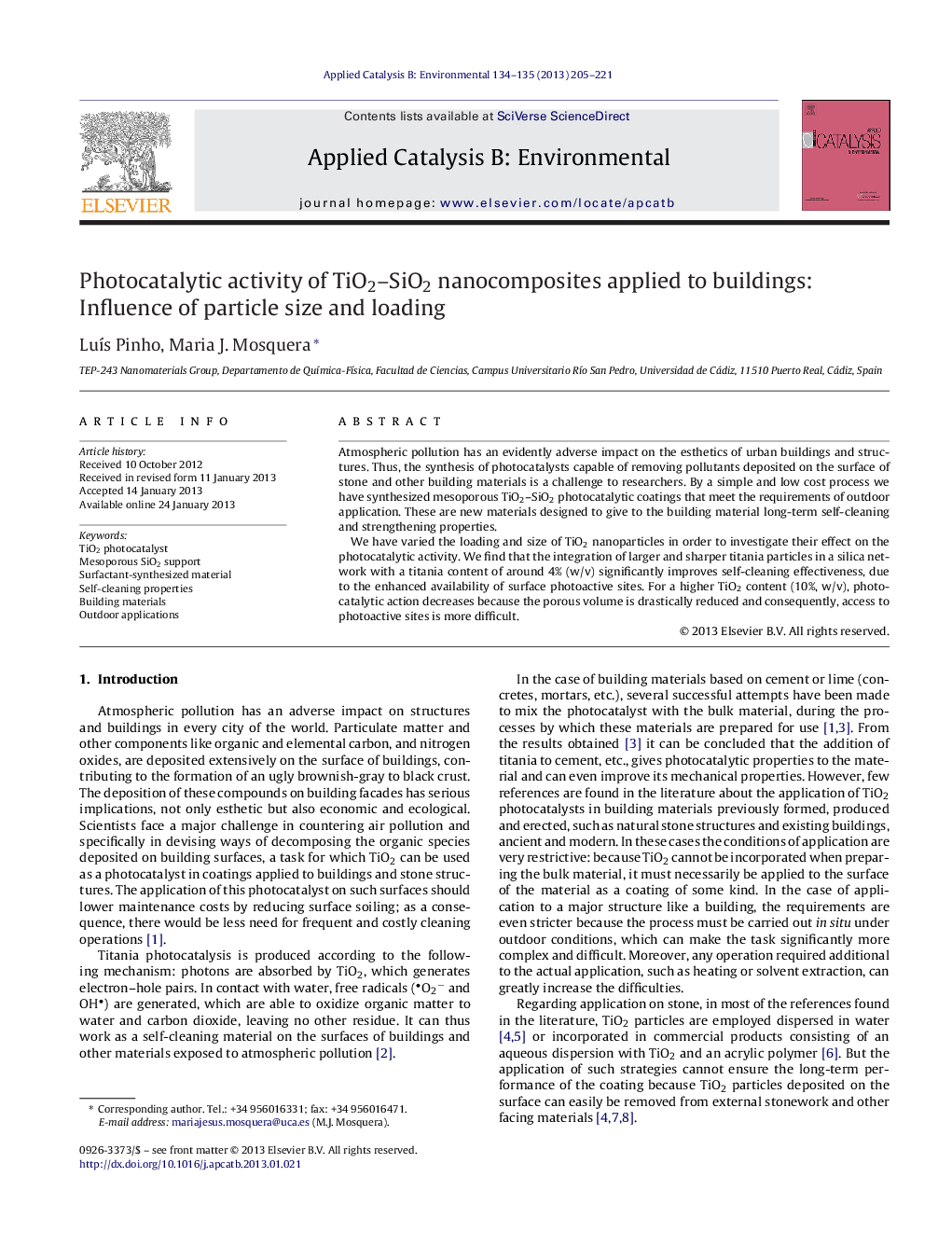| Article ID | Journal | Published Year | Pages | File Type |
|---|---|---|---|---|
| 45785 | Applied Catalysis B: Environmental | 2013 | 17 Pages |
Atmospheric pollution has an evidently adverse impact on the esthetics of urban buildings and structures. Thus, the synthesis of photocatalysts capable of removing pollutants deposited on the surface of stone and other building materials is a challenge to researchers. By a simple and low cost process we have synthesized mesoporous TiO2–SiO2 photocatalytic coatings that meet the requirements of outdoor application. These are new materials designed to give to the building material long-term self-cleaning and strengthening properties.We have varied the loading and size of TiO2 nanoparticles in order to investigate their effect on the photocatalytic activity. We find that the integration of larger and sharper titania particles in a silica network with a titania content of around 4% (w/v) significantly improves self-cleaning effectiveness, due to the enhanced availability of surface photoactive sites. For a higher TiO2 content (10%, w/v), photocatalytic action decreases because the porous volume is drastically reduced and consequently, access to photoactive sites is more difficult.
Graphical abstractFigure optionsDownload full-size imageDownload as PowerPoint slideHighlights► Mesoporous TiO2–SiO2 photocatalysts have been successfully synthesized. ► A surfactant acts to coarsens the porous gel network, providing better access to photoactive sites. ► The photocatalysts give self-cleaning properties to stone and improve its robustness. ► Addition of larger and sharper titania particles with 4% (w/v) content improves effectiveness.
